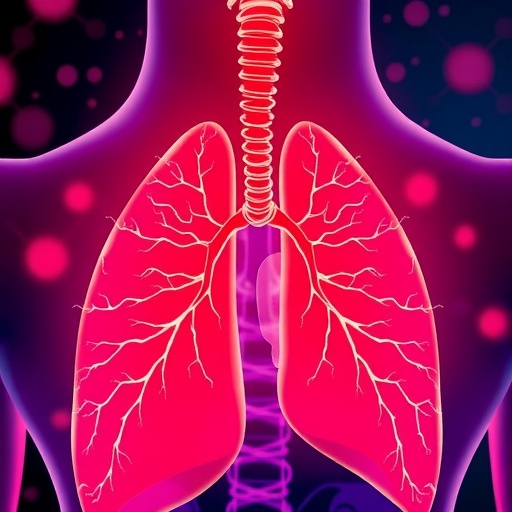Asthma, a multifaceted chronic respiratory condition affecting millions globally, has long challenged both clinicians and researchers due to its complex pathophysiology and heterogeneous clinical presentations. The recent publication by Moriki and Iacomino in World Journal of Pediatrics (2025) marks a transformative step in our understanding and management of asthma, introducing refined therapeutic strategies that promise to reshape clinical approaches, enhance patient outcomes, and mitigate disease burden worldwide. This comprehensive review delves deep into updated therapeutics that leverage advanced immunological insights, cutting-edge biologics, and precision medicine paradigms aimed at asthma control and prevention.
Central to the advancements in asthma therapy is the recognition of asthma as a spectrum of phenotypes influenced by distinct inflammatory pathways. Historically, treatment protocols have largely employed broad-spectrum anti-inflammatory agents such as inhaled corticosteroids (ICS) and bronchodilators. However, Moriki and Iacomino emphasize the shift toward targeted interventions addressing specific molecular drivers of airway inflammation. Their synthesis outlines how the stratification of asthma based on T2-high and T2-low inflammation phenotypes guides the deployment of biologics that neutralize key cytokines such as interleukin-5 (IL-5), interleukin-4 receptor alpha (IL-4Rα), and immunoglobulin E (IgE), thereby offering refined control with reduced systemic side effects.
One of the pivotal breakthroughs highlighted is the advent and refinement of monoclonal antibody therapies. Agents such as mepolizumab, benralizumab, and dupilumab have revolutionized treatment for severe eosinophilic asthma by specifically targeting IL-5 or IL-4/IL-13 pathways, resulting in marked reductions in exacerbation rates, oral corticosteroid burdens, and improved lung function metrics. The article carefully delineates the mechanistic underpinnings of these biologics, illuminating how their immunomodulatory effects disrupt the eosinophilic cascade and attenuate airway remodeling—a key driver of chronic symptoms and irreversible airflow obstruction.
In parallel with biologics, the review brings attention to novel small molecule therapies that are emerging as potent adjuncts or alternatives to existing treatments. Notably, blockers of Janus kinase (JAK) and phosphodiesterase-4 (PDE4) have gained traction due to their intracellular modulation of inflammatory signaling pathways. By inhibiting JAK enzymes involved in cytokine receptor signaling, these inhibitors dampen broad pro-inflammatory networks, illustrating a promising avenue to treat patients with steroid-resistant or mixed inflammatory asthma phenotypes. Moriki and Iacomino stress the importance of ongoing clinical trials assessing the safety and long-term efficacy of these agents to establish their therapeutic niche definitively.
The article further explores advancements in non-pharmacological interventions, underscoring the role of environmental control and personalized care models. Indoor air quality optimization, allergen mitigation, and adherence-focused digital health tools integrate into comprehensive asthma management plans, reducing exposure to triggers and improving self-management behaviors. These innovations align with a precision medicine framework that tailors treatment intensity and modality to individual risk profiles, genetic background, and biomarker-guided disease activity assessments.
Importantly, the authors also highlight pediatric-specific considerations, recognizing that childhood asthma presents unique clinical and therapeutic challenges. They discuss how early-life immune programming, viral infections, and genetic predispositions influence disease trajectory and response to therapies. The updated guidelines advocate for stratified treatment regimens that prioritize minimizing long-term medication side effects while ensuring adequate symptom control to foster normal lung development and growth in children.
The landscape of asthma therapeutics is further revolutionized by the integration of biomarker-driven diagnostics. Emerging tools such as fractional exhaled nitric oxide (FeNO) measurements, sputum eosinophil counts, and periostin levels facilitate dynamic monitoring of airway inflammation and therapeutic responsiveness. Moriki and Iacomino emphasize that these biomarkers enable clinicians to predict exacerbation risk, adjust treatment regimens in real-time, and avoid overtreatment, paving the way for truly personalized asthma care.
Another focus of the paper is the imperative to address global health disparities in asthma management. The authors call attention to the uneven availability of advanced therapeutics, especially biologics, in low- and middle-income countries. They advocate for innovative delivery models, generic biosimilars, and equitable healthcare infrastructures to ensure that cutting-edge treatments reach underserved populations, thus closing the gap in asthma-related morbidity and mortality worldwide.
Moreover, the review scrutinizes emerging therapeutic frontiers such as gene editing and novel vaccine strategies aimed at modifying the underlying immune dysfunction in asthma. Technologies like CRISPR/Cas9 hold the theoretical potential to correct genetic susceptibilities, while allergen-specific immunotherapies are being refined to induce durable tolerance with fewer adverse effects. These futuristic modalities represent ambitious but potentially transformative paths that could alter the disease course fundamentally.
Critically, Moriki and Iacomino address the challenges inherent in implementing updated asthma therapeutics, including patient adherence, cost-effectiveness analyses, and the need for robust longitudinal data. They highlight the role of multidisciplinary teams comprising pulmonologists, allergists, immunologists, and behavioral specialists in delivering integrated care that optimizes therapeutic outcomes while maintaining patient quality of life.
In the context of the COVID-19 pandemic and similar respiratory viral threats, the article acknowledges the intersection of viral infections with asthma exacerbations and the evolving therapeutic implications. Strategies aimed at enhancing mucosal immunity and understanding virus-asthma interactions remain under active investigation, underscoring the dynamic landscape of respiratory care.
In conclusion, Moriki and Iacomino’s comprehensive review reflects an exciting era in asthma therapeutics marked by precision, innovation, and inclusivity. The convergence of immunological breakthroughs, biomarker technology, and patient-centered care models heralds a future where asthma is no longer managed solely by symptom control but addressed at its molecular roots to prevent progression and optimize lifelong health. As clinical translation of these advancements accelerates, it is imperative that healthcare systems adapt to incorporate novel agents and diagnostic tools, ensuring that all patients benefit from this therapeutic revolution.
This seminal work not only consolidates current knowledge but also charts a clear trajectory for future research, highlighting areas such as mechanistic asthma endotyping, long-term safety of emerging therapies, and strategies to overcome healthcare barriers. The updated therapeutics elucidated here have the potential to dramatically reduce the global asthma burden, offering renewed hope to millions living with this challenging disease.
Subject of Research: Updated therapeutic strategies and advancements in asthma management.
Article Title: Updated therapeutics of asthma.
Article References: Moriki, D., Iacomino, G. Updated therapeutics of asthma. World J Pediatr (2025). https://doi.org/10.1007/s12519-025-00968-6
Image Credits: AI Generated
DOI: https://doi.org/10.1007/s12519-025-00968-6
Tags: asthma control strategiesasthma therapeutics advancementsbiologics for asthma treatmentchronic respiratory condition managementcytokine neutralization in asthma therapydisease burden mitigation in asthmaimmunological insights in asthmainhaled corticosteroids and bronchodilatorsprecision medicine in asthmarecent research in asthma treatmentT2-high and T2-low asthma phenotypestargeted asthma interventions





